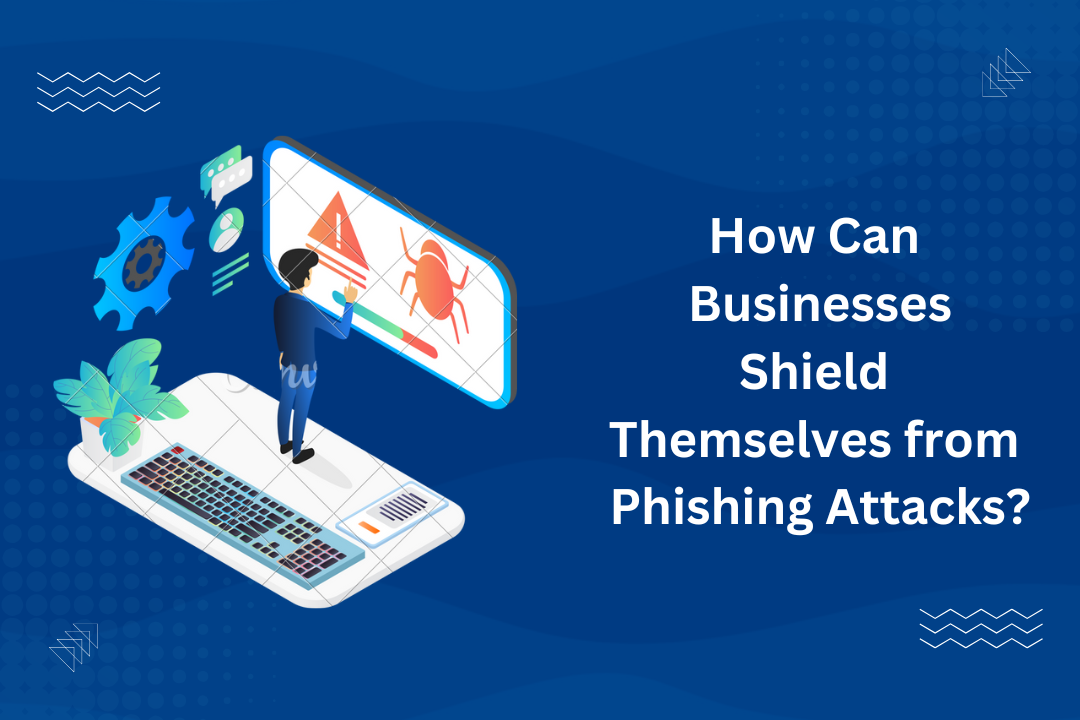How Can Businesses Shield Themselves from Phishing Attacks?

Phishing scams are one of the most common and harmful cybersecurity threats to organizations today. Using fraudulent emails, instant messages and websites, cybercriminals can social engineer employees into divulging sensitive data like passwords, financial details and even customer information. If a phishing attack is successful, it can result in financial loss, a data breach and loss of reputation. Fortunately, there are measures that businesses can take to proactively protect themselves from these threats. The article will outline practical measures that businesses can adopt to target phishing assaults.
1. Train Employees on Phishing Attacks
The most straightforward approach to avert phishing attacks is through education and training of employees on cybersecurity issues. Most phishing attempts are successful because of human negligence, so training the workforce to identify phishing scams is important.
Critical Areas of Focus:
- Telling suspicious emails and their content like urgent requests or even unknown senders.
- Clicking on links or even downloading attachments from unreliable sources.
- Fake websites which have been designed to capture login credentials.
- Reporting phishing emails to the IT desk for action.
Regular cybersecurity awareness programs, workshops, and simulated phishing drills can help reinforce training and get employees accustomed to the ever-evolving techniques used by cybercriminals.
2. Email Security Measures
Phishing attacks overwhelmingly use email as an entry point. The following options can help improve overall email security for the organization:
Security Practices
- Spam Filters: The use of powerful spam filters is recommended. Such filters should block phishing emails before they find their way to user mailboxes.
- Email Authentication Protocols:
SPF (Sender Policy Framework) guarantees that only specific servers that are authorized to send emails from your domain and no other.
DKIM (DomainKeys Identified Mail) ensures that an Email has not been modified in any way while in transit.
DMARC (Domain-based Message Authentication, Reporting & Conformance) aligns SPF and DKIM policies to reduce the chances of email spoofing. - Warning Banners: External emails can be flagged within the system by using specially configured email accounts which helps employees avoid phishing attempts.
3. Enabling Multi-Factor Authentication (MFA)
The Phisher does not stand a chance with MFA equipped. As an added security measure, MFA requires users to authenticate using at least two of the following four factors:
- Knowledge-Based: a credential, such as a password
- Possession-Based: An object, like a token or a security mobile app
- Action-Based: Behavior verification including finger/face verification.
No phishing attack or unauthorized access is successful with the usage of MFA enabled on email accounts, critical financial transactions, and other sensitive data accounts.
4. Keeping Software and System Up-to-date
Overly leisurely updating software opens the door to criminals looking to breach the system through malware-infused phishing scams. Businesses should adopt a proactive approach and make sure to:
- Update applications, browsers and operating systems regularly.
- Always turn on automatic downloads for security updates.
- Employ endpoint protection software which monitors and blocks potentially harmful behavior.
5. Securing Domains and Business Websites
The attacker will always try to bypass the security safeguards by attempting to impersonate registered sites. In order to ensure your domain is properly safeguarded, make sure to follow these steps:
- Buy domains that will prevent scammers from creating imitator lookalike domains.
- Use HTTPS, SSL, or TLS certificates for trusted site data encryption.
- Use brand impersonation detection services which track unauthorized domain usage.
6. Minimize the Sharing of Sensitive Information
Limiting the access to certain critical pieces of information mitigates the risk of phishing attacks inflicting immense damage. Some of the recommended practices are:
- Using role based access control (RBAC) systems to limit access to certain information depending on the user’s particular job role.
- Adopting the principle of least privilege (PoLP) whereby employees are allowed access to only information that is crucial to their work.
- Periodically auditing access and removing privileges from users who should no longer have access.
7. Initiate a Plan for Responding to Phishing Attacks
No matter how preventive measures are implemented, phishing can still go through. With a proper response outline, a permanent solution can be deduced. Companies should:
- Formulate a comprehensive strategy to allow users to report phishing emails.
- Provide the IT departments with plans for immediate response, including actions like account isolation and blocking the relevant URLs.
- Utilize mitigation reports to analyze incidents for furthering security policies and fortifying against further attacks.
8. Examine Network Traffic Patterns and Activity
One great way of identifying phishing attacks is through the continuous monitoring of all types of network activity for any unusual activity that may point to such a phishing attempts. Some of the IDS tools include:
- Intrusion Detection Systems (IDS) and Intrusions Prevention Systems (IPS) to scan and retrieve malicious traffic data.
- Security information and event management (SIEM) services for analyzing real-time threats.
- Anomalies are flagged through the analysis of behavioral patterns using AI technology.
9. Foster A Security-First Mindset
As much as technology and policies matter, creating a culture that focuses on cybersecurity is equally important. Employees should be motivated to:
- Verify unusual requests for sensitive information through emails.
- Report potentially harmful activity without fear of retribution.
- Update themselves regularly on different types of phishing attempts and “educate” themselves on the threat.
Conclusion
While phishing attempts are rising, companies are able to tackle the threats with forward thinking approaches. Educating employees about the issue and enforcing robust security practices along with threat monitoring helps devise an effective counter-strategy against phishing attempts. If you need phishing attack prevention, connect with us today to safeguard your business from cyber threats.Cybersecurity should be a priority to ensure confidential information is protected along with cultivating trust and a good image towards customers. Keeping alert enhances security.







